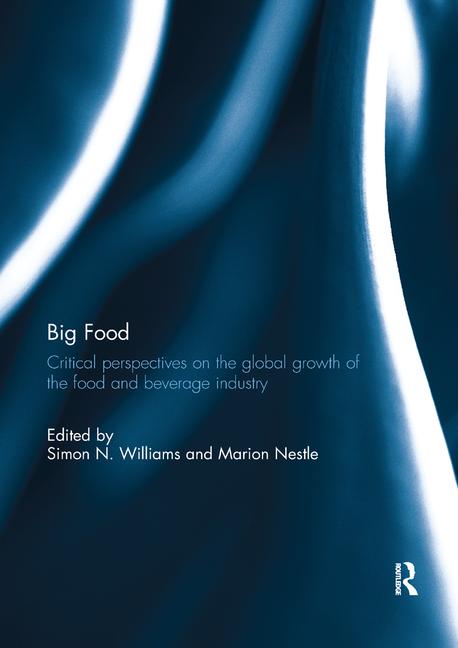Touting protein content is hot. Soy, dairy, pea, rice, egg and other proteins contribute nutritional value, while interest in gluten-free foods continues to grow.
The Popularity of Protein

As a dietary component, protein is critical for muscle-building, the synthesis of enzymes, structural and mechanical functions, cell signaling, immune responses, cell adhesion and many other metabolic functions. Protein is a necessity, as it is a source of nine essential amino acids (EAAs) that cannot be synthesized in the body: isoleucine, leucine, lysine, threonine, tryptophan, methionine, histidine, valine and phenylalanine.
Unlike animal proteins, plant proteins are not “complete,” usually lacking two or more EAAs. However, combining appropriate plant proteins will alleviate any nutritional concerns. The development of high-protein products and the discovery of novel bioactive peptides are providing food manufacturers with the opportunity to use an essential macronutrient in a number of new ways.
In the past few years, protein science has moved beyond the exploration of traditional metabolic and physiological functions. Diets with increased protein and reduced carbohydrates have been reported to improve risk factors for cardiovascular disease (CVD), such as reducing serum triacylglycerol, increasing HDL cholesterol, increasing low-density lipoprotein (LDL) particle size and reducing blood pressure. Such diets have been investigated for the treatment of type 2 diabetes, with positive outcomes related to glycemic regulation, including reducing fasting blood glucose, postprandial glucose and insulin responses, and the percentage of glycated hemoglobin (Layman, DK, et al. 2008. Am J Clin Nutr. 87 (suppl):1571-5S).
Many of the initial nutrition studies focused on soy protein, in part because of the long-term availability of the product in the marketplace. A meta-analysis of 38 clinical studies, which determined soy protein lowers serum cholesterol in normolipidemic subjects and has a larger effect in hyperlipidemic patients (Anderson JW, et al. 1995. N Engl J Med. 333:276–82), led to the approval of the U.S. Food and Drug Administration’s decision, in 1999, to allow health claims for the reduction in CVD risk for products containing soy proteins. In this review, soy intake was correlated with an average lowering of cholesterol by 9.3%, LDL cholesterol by 12.9% and triglyceride by 10.5%.
Recent clinical emphasis has been on the ability of proteins to assist in weight control. Protein is more satiating and promotes less energy intake, and it has a higher thermogenic effect (diet-induced energy expenditure) than carbohydrate or fat. In addition, protein has favorable effects on body composition during weight loss or maintenance, by helping to preserve fat-free mass, reduce fat mass and improve metabolic profile. These effects may contribute to the prevention of obesity (Westerterp-Plantenga, MS, et al. 2009. Ann Rev Nutr. 29: 21-41).
Consumers are recognizing the health benefits of protein, especially in the wake of the obesity crisis and, in large part, due to the “low-carb” diet trend popular in the mid 2000s. Sales of protein ingredients are expected to increase to $18 billion by 2010 (Global Industry Analysts, March 2008). The U.S. is the fastest-growing market, with a predicted annual growth rate of 7.6%.
Common Types of Protein
The most common types of protein used by the food industry are soy (as noted previously), whey, egg and rice. Sources new to the market include pea and hemp proteins. Generally, there are two categories of protein powders--concentrate and isolate. The concentrate form is more widely used, easier to source and less expensive; it contains approximately 30-85% protein. Isolates are more expensive and will contain more than 90% protein.
Whey protein derived from milk is a complete protein. It is the richest known source of naturally occurring branched chain amino acids (BCAAs--leucine, isoleucine and valine). The body requires higher amounts of BCAA during and following exercise, as they are taken up directly by the skeletal muscles vs. first being metabolized through the liver, like other AA. Low BCAA levels contribute to fatigue, and they should be replaced within one hour or less following exercise or participation in a competitive event.
Whey proteins assist in weight loss, the mechanisms by which include angiotensin-converting enzyme (ACE) inhibitor activity. In addition, its high concentration of leucine appears to act in the repartitioning of dietary energy from adipose tissue to skeletal muscle during weight loss, resulting in greater preservation of skeletal muscle and accelerated fat loss during negative energy balance (Zemel, MB. 2009. Phys Sportsmed. 37(2):29-39).
Whey proteins have been shown to reduce systolic and diastolic blood pressure in overweight and obese individuals, and to lower the augmentation index (AI), which is an indirect measure of arterial stiffness (Pal and Ellis. 2009. Obesity (Silver Spring) Nov. 5). Similar blood pressure-lowering effects were noted with casein protein--the other major milk-based protein source (approximately 75% of the protein in cow’s milk is casein, and the remaining 25% is whey).
Egg protein is made from the egg white. As a complete protein, egg is used as the standard against which other proteins are measured because of its very high biological value.
Of the various plant proteins, soy is one of the most complete, with regard to its AA profile. Soy proteins are derived from soy meal, and their health benefits have been well-studied and are most recognized in the heart-health area. However, research also suggests that soy (as well as whey) proteins may protect against mammary tumors, as noted in a study with female Sprague Dawley rats. Diets rich in soy reduced the incidence of chemically-induced mammary tumors by approximately 20%. Furthermore, under this experimental protocol, whey appeared to be at least twice as effective as soy in reducing both tumor incidence and multiplicity (Hakkak, R. et al. 2000. Cancer Epide. Biomarkers Prevention. 9:113).
While brown rice flour and rice starch are familiar, rice protein is not yet well-established as a food ingredient, particularly in highly concentrated form. Claiming a higher net protein utilization and biological value than pea protein or wheat protein, most rice proteins are derived from brown rice. The general process to produce the protein extract involves various enzymes that break down the carbohydrate portion.
In rats, purified rice protein isolates (RPI) have been reported to significantly lower serum cholesterol concentrations, due in part to increases in fecal bile acid, plus neutral steroid excretion (Morita, T. et al. 1996. J Sci Food Agric. 71(4):415). Soy (SPI) and RPI have been assessed relative to casein to determine their ability to reduce atherosclerosis development in apolipoprotein E-deficient mice. Aortic lesion area and size in the aortic root in mice fed the casein-based diet were greater than those in the SPI or RPI groups. The plant protein-fed mice also had higher serum arginine levels. Anti-atherogenic properties of SPI- and RPI-derived proteins were shown under the conditions of the study (Ni W, et al. 2003. Br J Nutr. 90(1):13).
Pea protein is generally derived from yellow peas and is available from both European and North American companies. Pea protein isolate is a good source of arginine, lysine and BCAAs. In 39 healthy subjects, lower hunger and desire to eat was reported following consumption of a pea protein hydrolysate (PPH), in comparison with a combination of whey protein+PPH or a control (milk protein [MP] -80% casein and 20% WP). A longer inter-meal period and a higher satiety index were found after consumption of PPH. Both the PPH and WP led to greater fullness, when compared to MP and WP+PPH (Diepvens K, et al. 2008. Int J Obes (Lond). 32(3):510).
Hemp protein is new to the sector and processed from Canabis sativa seeds. In comparison to other plant proteins, only soy is higher in total protein. Hemp protein is rich in the sulphur-containing AAs, methionine and cysteine, which are important for the repair and growth of lean body tissue. BCAAs leucine, isoleucine and valine are also present. Hemp seed is a good source of the arginine, important physiologically as the immediate precursor of nitric oxide, which relaxes blood vessels. In this respect, arginine is used in vascular conditions, where dilation of the blood vessels is important (for example, in peripheral arterial disease).
Bioactive Peptides
Hypertension is one of the most common worldwide diseases. Angiotensin I converting enzyme (ACE) catalyzes the formation of vasoconstrictor, angiotensin II, and the inactivation of vasodilator, bradykinin. Peptides derived from animal and plant proteins have been developed and are actively being studied in vitro and in vivo for their ACE inhibitory activities. Early work in this area echoes back to the mid-1990s, in which a number of randomized, controlled trials were published that showed antihypertensive effects of peptides derived from milk. Research mainly focused on isoleucine-proline-proline and valine-proline-proline (IPP + VPP), two lactotripeptides that can inhibit ACE in vitro. Rice protein hydrolysates (with the AA sequence of Thr-Gln-Val-Tyr) showed ACE inhibitory activity in vitro and also reduced blood pressure in spontaneously hypertensive rats (Li G., et al. 2007. Asia Pac J Clin Nutr. 16:1S:275-80).
A pea protein hydrolysate (PPH) has been tested for renin and ACE inhibition. In rats with polycystic kidney disease (PKD), the PPH significantly reduced blood pressure associated with PKD, and levels of angiotensin II in the heart, plasma and kidneys were significantly lower. Administration of PPH significantly increased urine output and levels of the cyclooxygenases (COX-1 & COX-2) in kidney tissues, which could have contributed to increased dilation of blood vessels and, hence, better ability of the kidneys to filter blood and produce more urine (R.E. Aluko and Aukema, H.M. 2009. American Chemical Society Conference, Salt Lake City, Utah, March 22-26).
Reducing blood pressure is not the only area of interest in the investigation of the health benefits of peptides, as studies are underway in immunomodulation, protection of bone mass, cholesterol lowering and as antioxidants. Recently, a novel peptide derived from whey protein tested in healthy men and women improved macrovascular and microvascular function, as assessed by brachial artery flow-mediated dilation (FMD) (Ballard KD. Et al. 2009. Nutr J. Jul 22;8:34).
Industry Interest
Protein is an ingredient that is attractive to manufacturers, as consumers do value this item in foods and beverages. Prepared Foods magazine asked 326 respondents, “Which of the following is your company interested in developing?” Protein ranked fairly high, with just under a third citing “high protein” as a strategy, virtually unchanged from 2008. Protein is of interest “for satiety/feeling of fullness.”
Besides weight-loss applications, soy and other proteins are increasingly being used in gluten- and wheat-free products. Gluten is a general name given to the storage proteins (prolamins) present in wheat, rye, barley and oats. Celiac disease occurs when consuming gluten proteins triggers an autoimmune response that damages the lining of the small intestine. This damage can then reduce nutrient absorption and contribute to other ailments of the body and immune system. There is no known cure for celiac disease, but it can be successfully managed with a lifelong commitment to a gluten-free diet.
Approximately one in 133 people (more than 2.5 million) in the U.S. are believed to suffer from celiac disease. Estimates as to how many people remain undiagnosed run as high as 97%; thus, the demand for gluten-free products is in its infancy and is growing.
According to WHO/FAO guidelines, a gluten-free food may contain no more than 200ppm prolamin on a dry-weight basis. Foods labeled as gluten-free in Canada and the U.S. do not allow the presence of any gluten-containing ingredients, such as wheat starch. The maximum level for a product to declare gluten-free is <20ppm.
Packaged Facts reported there has been an average annual growth rate of 29% in gluten-free foods and beverages in the U.S. since 2005. In 2008, the market was worth $1.56 billion, and the company estimates the market in 2012 could be worth as much as $2.6 billion. Between January 2008-June 2009, Mintel’s Global New Products Database found gluten-free to be the 10th most popular claim for new product launches throughout Europe, followed by the U.S. In this period, 3,398 gluten-free products were launched globally.
Soy, rice, hemp and pea protein isolates, and chickpea flour all have been successfully produced and show promise for gluten-free, nutritious and palatable foods. With increasing interest in gluten-free and new research supporting weight-reduction characteristics of proteins, the segment will continue to be appealing to both consumers and food manufacturers. pf
Website Resources:
www.PreparedFoods.com -- Type “protein” into the searchable database
www.dietitian.com/protein.html -- Enlightening Q&As, regarding protein/amino acids
http://bit.ly/7jV31F -- New research shows balancing protein intake, not cutting calories, may be key to long life; from Science Daily
Looking for a reprint of this article?
From high-res PDFs to custom plaques, order your copy today!





